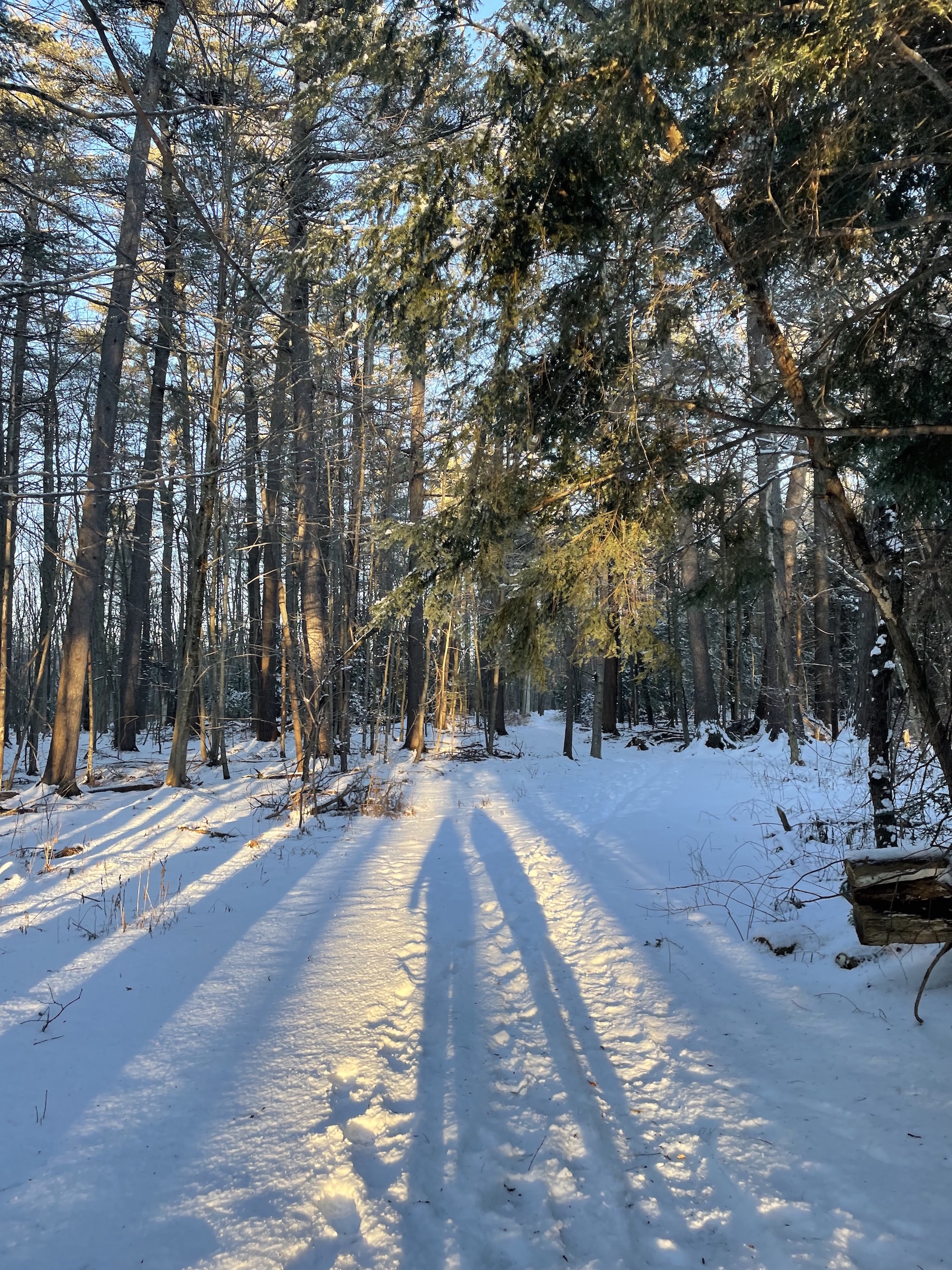The secret in the pines: appreciating nature close to home
March 4, 2022
 This
piece represents the opinion of the author
.
This
piece represents the opinion of the author
.
 Courtesy of Jane Olsen
Courtesy of Jane OlsenThe Bowdoin Pines is a quaint trail on the edge of campus that provides access to nature only minutes from dorms, classrooms or whichever Brunswick spaces you most frequently occupy. With no need for driving or a long hike, this trail offers accessible tranquility amongst a tree that has become a symbol for Maine, and in many ways, Bowdoin itself—the pine.
At the College, we are surrounded by pine trees. Students and faculty observe them every day on their way around campus and the tree as a symbol has found its way into every part of the Bowdoin experience—whether it’s the Beyond the Pines Fellowship, the namesake of the Peucinian society or the Pine Apartments that sit on the edge of the Bowdoin Pines Trail. Yet even on a campus well integrated with its surroundings, a walk through the quad can begin to feel repetitive.
But if you continue your stride beyond the Polar Bear statue outside of Smith Union, loop around the mysterious heating plant and finally walk past Kanbar Hall, you will reach the intersection of Bath Road and Federal Street. Right behind the Alumni House that greets you at this intersection sits a parking lot and then the start of the Bowdoin Pines Trail.
The trail itself is fairly wide, with enough space that even an afternoon visit after a snowfall is not daunting at all. If you are looking for an escape from campus that is not too hard to access, this could be the location for your next conversation with a friend after class or simply a haven to appreciate the tree that has become so quintessentially Maine.
What is Maine without the pine tree? The state itself has become known as the Pine Tree State. The tree has graced the state flag, seal and quarter. The white pine cone and tassel is even the floral emblem of Maine. While there are 16 species of conifer native to Maine, it is easy to rush past the pines on campus without stopping to discover distinctions. The Bowdoin Pines provide space to consider these details.
A steady whirr of cars on the road beyond the trees poses difficulty for accessibility, but the sound muffles as you become encased in the woodland. While some may not favor the proximity to the road, I enjoy the transition between the all-consuming business of campus life and a space where I am able to rejuvenate. Smaller paths that lead to snow-covered train tracks provide similar reminders of the bustle beyond the pines, while the clearing around the tracks provides an avenue for sunlight.
The path is not long, but somehow among the trees I feel as though I am able to breathe deeper—to find solace in the stillness. Pine needles whisked away by the breeze draw my attention to the trunks of their trees that stand sturdy with age. Following their length up to the sky, I feel like I am a part of something larger than myself: a lineage of appreciation for this land.
The appreciation of these trees, and the land in which they inhabit, has a long history, from the Abanaki people to the College’s campus only a few steps away. As the campus expands, with new buildings rising from the shadows of fallen trees, I hope that pathways through the pines continue to flourish and provide a route for natural relief.
A couple of years ago, amidst the tumultuous start of the Covid-19 pandemic, I took a course called “The Science of Wellbeing.” Among the scientifically proven contributors to happiness was an appreciation of nature. I am not suggesting that you will walk out of Bowdoin Pines free of all problems. But maybe when you cross back over Bath Road, you will have inhaled a little deeper, felt a part of something larger, and when you exhale and step back on to campus, you will return with just a bit more clarity.
Comments
Before submitting a comment, please review our comment policy. Some key points from the policy:
- No hate speech, profanity, disrespectful or threatening comments.
- No personal attacks on reporters.
- Comments must be under 200 words.
- You are strongly encouraged to use a real name or identifier ("Class of '92").
- Any comments made with an email address that does not belong to you will get removed.

Beautiful!
Thank You for your appreciation of conifers, and your willingness to share it! Thank you for encouraging others to experience and enjoy the nurturing and healing effects of conifers. May more human beings treasure and protect them!
I live in a place in our country where my city and county have grown fearful of trees and they are widely and frightfully being removed. Our air is much less clean now, and it is ever more hot.Thank you for your article!